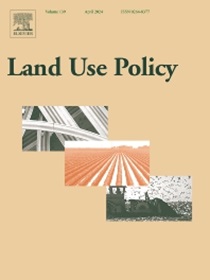Covid-19 如何改变了我们游览河流的方式?大数据在情感分析中的应用
IF 6
1区 社会学
Q1 ENVIRONMENTAL STUDIES
引用次数: 0
摘要
河流作为自然环境,将人们与周边地区的各种活动联系在一起。虽然文献中忽略了与河流相关的情感价值和福祉联系,但了解游客对河流的看法以及在大流行病期间对河流的使用发生了怎样的变化,有助于土地使用政策和规划的决策。另一方面,社交媒体有助于阐明河流附近的游览模式和情绪,为更好地宏观管理这些区域提供了前所未有的洞察力。在这项研究中,我们利用机器学习技术对波兰的河流进行了内容分析,通过游客的视角揭示用户生成内容(UGC)。我们的目标是了解重要的文化霸权、访问模式和游客的情绪。我们还将结果与 Covid-19 的日常感染情况进行了比较。研究结果表明,在大流行期间,特别是在情绪最低落的时候,河流的压力增大。我们的研究结果可能有助于阐明河流附近的模式和情绪,从而提供前所未有的实用见解,并为进一步的研究建议指明方向。本文章由计算机程序翻译,如有差异,请以英文原文为准。
How Covid-19 changed the way we visit rivers? Applications of big data for sentiment analysis
Rivers function as natural settings, bringing people together with various activities in the surrounding area. While the literature has overlooked the emotional values and wellbeing connection associated with rivers, knowing how the rivers are perceived by visitors and how the use of rivers has changed during the pandemic can assist decision-making for land use policies and planning. On the other hand, social media, assisting in articulating visitation patterns and moods proximate to the river, provides unprecedented insight to better macro- manage these areas. In this study, we employed Machine Learning to conduct a content analysis for rivers of Poland to expose User-Generated Content (UGC) through the visitors’ lens. We aim at understanding an essential cultural hegemony, the patterns of visits, and the moods of visitors. We further compared the results with the Covid-19 daily infections. The findings suggest an increased pressure on rivers during the pandemic, specifically at the time of the lowest sentiments. Our results may help in articulating patterns and moods proximate to the river that provide unprecedented practical insight and illuminate the path for further research proposals.
求助全文
通过发布文献求助,成功后即可免费获取论文全文。
去求助
来源期刊

Land Use Policy
ENVIRONMENTAL STUDIES-
CiteScore
13.70
自引率
8.50%
发文量
553
期刊介绍:
Land Use Policy is an international and interdisciplinary journal concerned with the social, economic, political, legal, physical and planning aspects of urban and rural land use.
Land Use Policy examines issues in geography, agriculture, forestry, irrigation, environmental conservation, housing, urban development and transport in both developed and developing countries through major refereed articles and shorter viewpoint pieces.
 求助内容:
求助内容: 应助结果提醒方式:
应助结果提醒方式:


